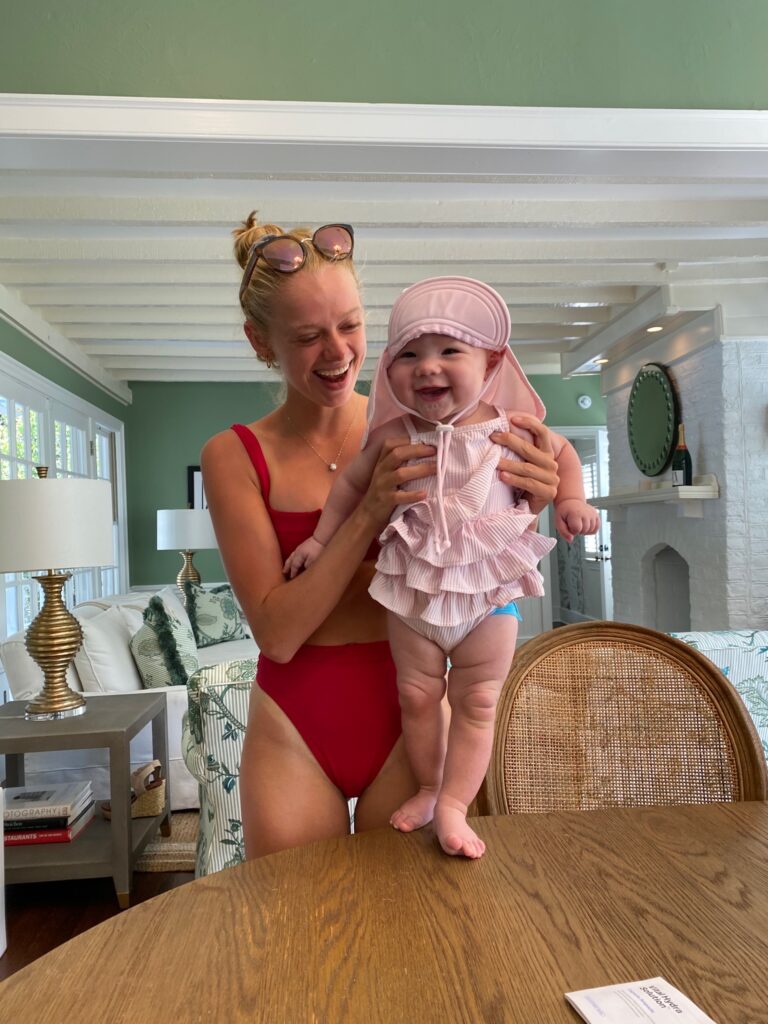Abby's Two Cents
Some wisdom from over the years to share.


the importance of a playful bath time
The water can be a daunting enviornmet for a child, especially a young one. Bath time is a great place to start creating a safe and fun aquatic environment for your child. I know for some families bath time is right before bed and it indicated the start of “wind-down” time. Resist the urge to lull your child to sleep with warm water and nighttime shampoo. Once in a while, gear up for some bath time giggles, splashes, and of course bubbles!
Provide plenty of toys to play with, and talk about the lessons with your child. Throw on a pair a goggles and a bathing suit if you are feeling up to it! Bath time is the perfect opportunity to get your child used to having their hair we and face in the water. Encouraging them to blow bubbles in the water and putting their own head in the water rather than dumping water on them. Even practicing straight leg kicks while sitting down can help your child make the connection.
Since the bath is a much smaller body of water, and of course very warm, it makes the transition more familiar for the child. This does not have to take place during every bath time, but if you are feeling up to it one night a week, or notice your child is having trouble in the pool that day, it is a great place to put in some extra help!

How to extend your lessons at home
Practice, practice, practice! Whenever you have a chance to be in the pool with your child, take off the puddle-jumper for a bit-just in ten-minute increments to start. Building your child’s confidence (not only in the water but in themselves) will push them forward to learning new skills and remove the fear block. We are taking small steps to become comfortable in an uncomfortable environment.
Have your child jump to you from the step, then jump from the edge of the pool. Work up to it. How them how you put your own face in the water and hold your breath/blow bubbles. Allow your child to push their own boundaries within the blanket of your safety. Practice with your child, then give them the opportunity to do it for themselves, and take turns.
Ask them to show you what they learned during their swim lesson and if they can teach you how to do it. If your child is learning floats and strokes, make a game out of it. allow their brains to focus on the fun aspect of the activity, taking moments to hone in on the technique. If you see them struggling, take a step back and provide assistance and room to talk about why it is happening. Remember that children follow by example, and it is okay to be scared. you must listen to your child. We are all in this together!



why are people dunking their infants under water?
The proper terminology for when one takes a six to twelve-month-old child and submerged them underwater is called Infant Swimming Resource, or ISR. The goal of ISR lessons is survival, meaning it teaches your child skills to ensure that they can save themselves in the event they encounter a problem in the water. The organization was founded in 169, developed to teach young children to save themselves in the water. The program has raised some controversy for parents. Some believe it is a life-saving course necessary for their child to start swimming, while others believe it is a recipe for childhood trauma. Let us unpack this, shall we?
During the ISR lesson, your child first learns how to roll onto their back to float, rest, and breath, maintaining this position until help arrives. these lessons can progress until your child can hold their breath and swim underwater without assistance through the following sequence:
Swimming until they need air
Rotating onto their back to get air
Then rolling back onto their stomach to continue swimming
The child does not learn a stroke to swim in the water, rather how to kick and wiggle in order to be mobile.
I think of these lessons as the “navy-seal training” of children’s swim lessons. They are effective and you are likely to see quick results–i have witnessed very small children who have done the program and am astonished with their capabilities. the program, is the top tier skill wise. If you want your infact to simply knoe how to save themselves when in the water, enroll them in theis program. In this instance, your infant will be pushed to their most uncomfortable levels. The program teaches them how to save themselves, not neccessarily how to swim.
I belive when a child is that young, the water should be a fun, relaxed, and welcoming enviornmet. A chail’s brain at that stage is still taking in everything around them and absorbing it like a sponge. Everything is so instensly studied by a baby because they do not quite know what it is, they are discovering the whole world for the first time–constant first impressions. Rather than associating the pool eith the need to save themselves necause they are in danger, I am to allow the child to enter the water at their own pace, with a smalll nidge in the right direction here and there. Acknoledging the safe enviornment they are in to build up the courage to discover the unknown.
